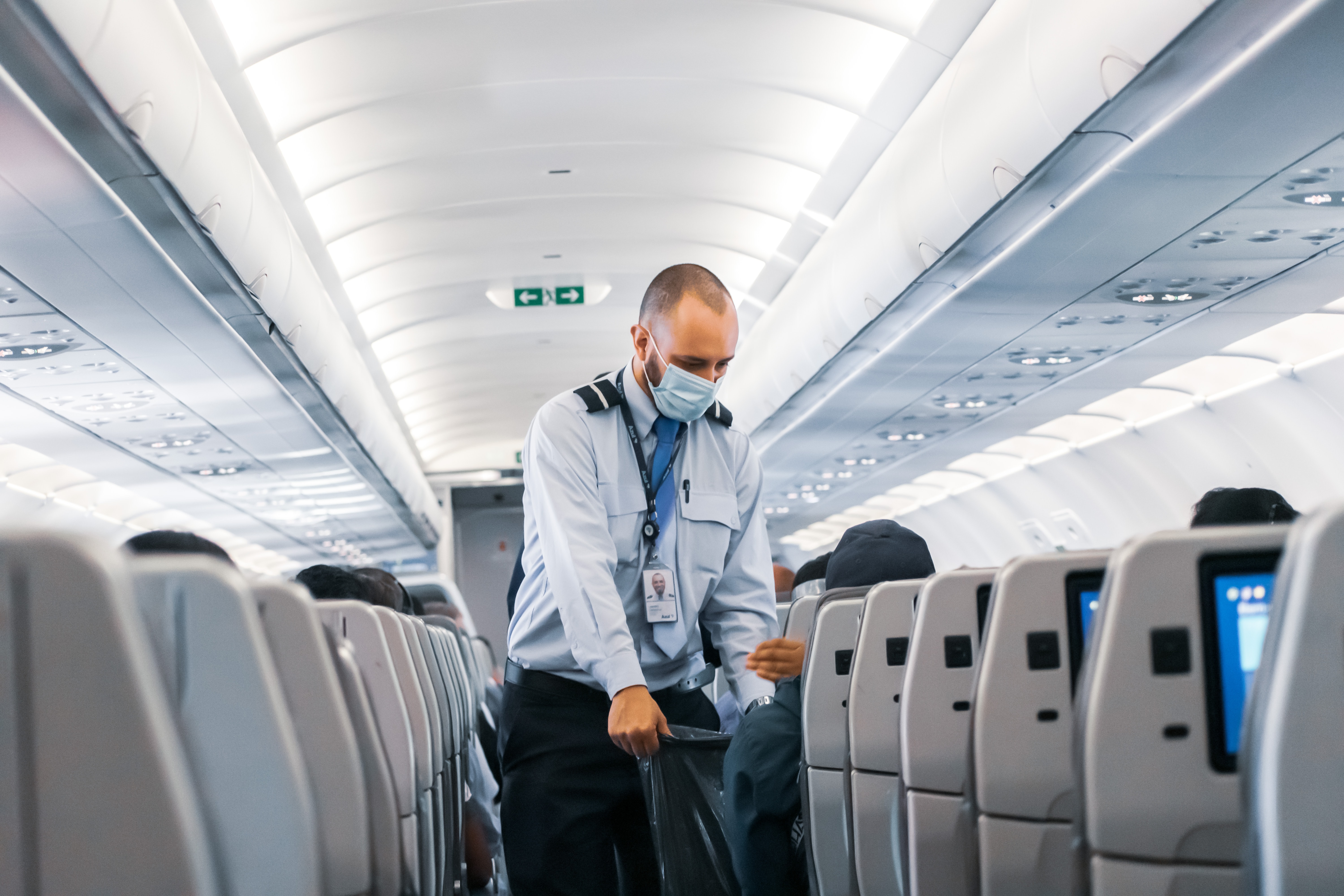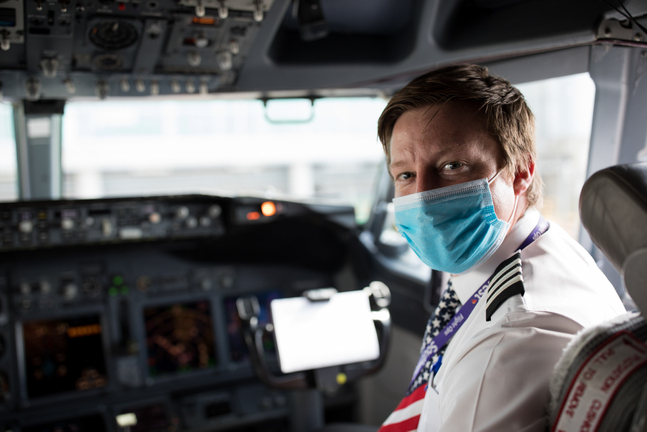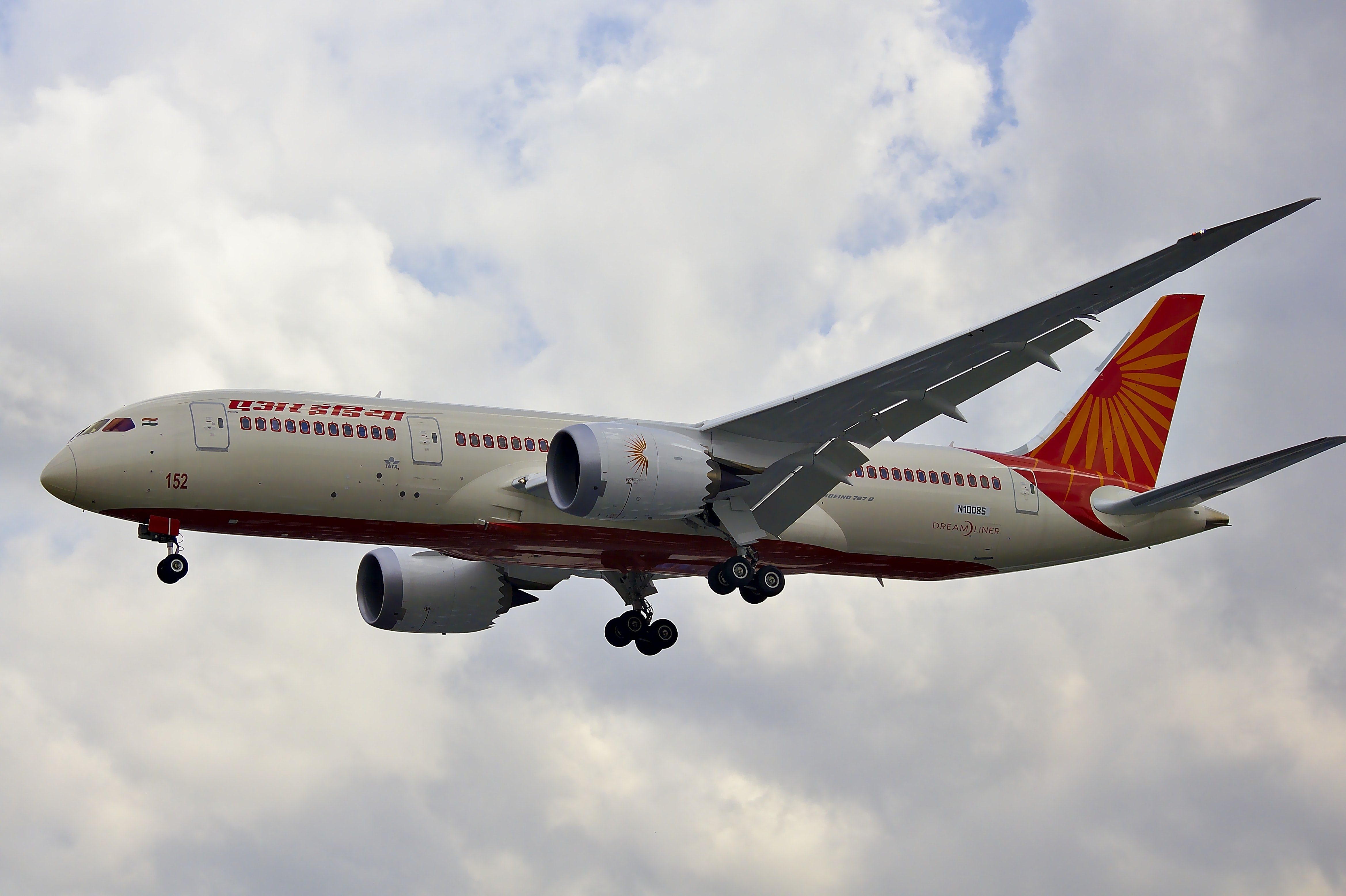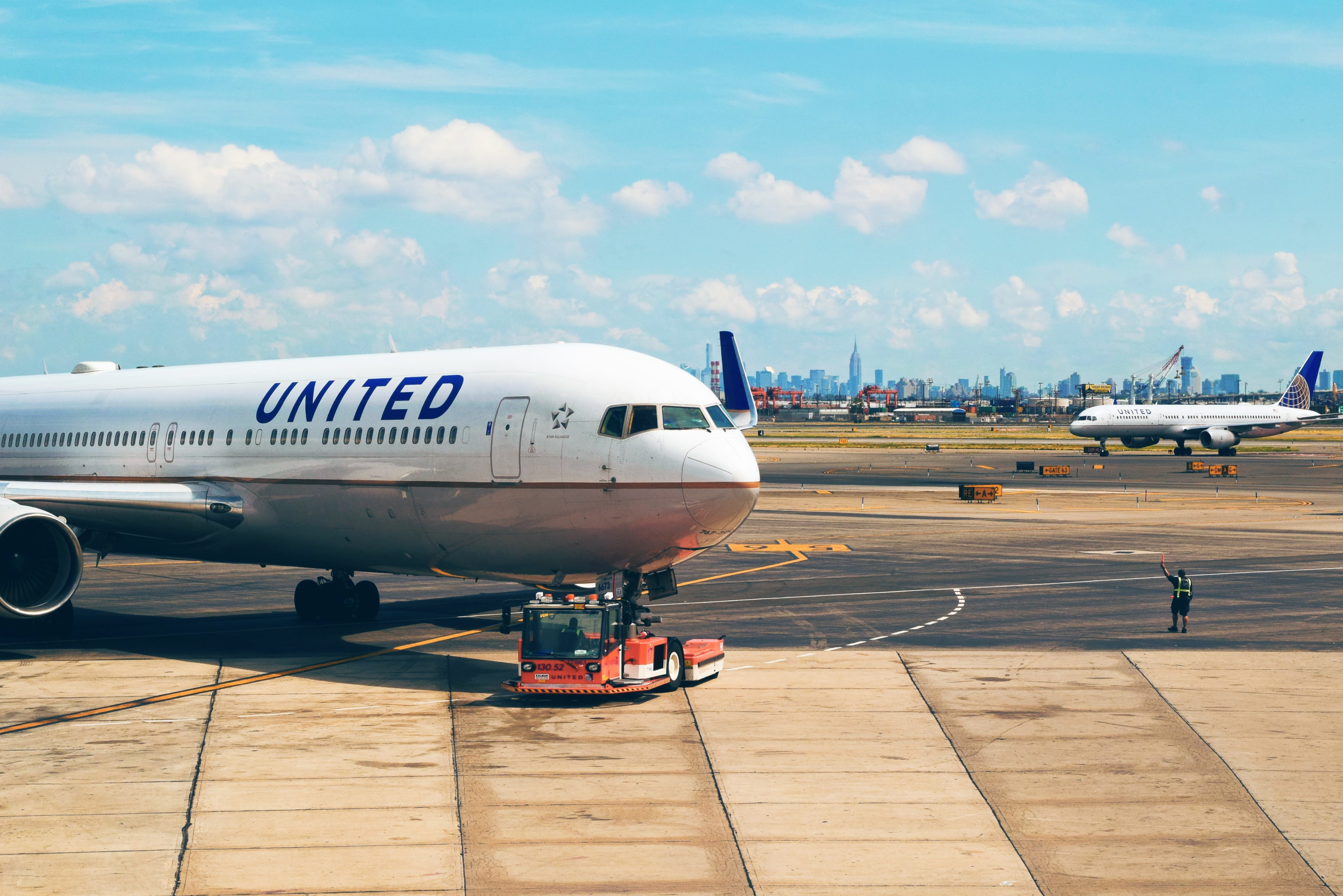How COVID-19 upended the entire aviation industry
Commercial
17 March 2021
The airline industry has taken many serious hits throughout history, such as the attacks on September 11, 2001 and the recession in 2008. However, it hasn't seen anything quite like the COVID-19 pandemic.
It's not hard to see how COVID-19 drastically affected demand for flights. Nobody is going on vacation anymore and business travelers stopped traveling. The airline industry is intrinsically cyclical, with demand decreasing in the winter and during recessions, but there are usually actions to combat it. Usually, reduced prices and economic stimulus are sufficient. However, with the pandemic, especially towards the beginning, no amount of price reduction could convince people that they wouldn't get sick flying, nor would it reverse government travel bans.

A flight attendant on an Azul Linhas Aéreas Brasileiras flight. Photo by Lukas Souza on Unsplash

A Southwest Airlines First Officer during the COVID-19 pandemic. Photo © 2020 Stephen M. Keller; courtesy of Southwest Airlines.
As the pandemic labored on, airlines were able to take unique measures to try to get people flying again. For example, United Airlines conducted a study with the Department of Defense to research the risks associated with flying on an airplane. They found that, with mask compliance, it was virtually impossible for an infected passenger to infect others on an airplane. This is due to HEPA filtering, and the way cabin air conditioning circulates the air. Here, we have science that shows that flying itself is quite safe, yet it's not enough to get people flying again. In the same way that the almost impossible likelihood of getting into a plane crash gives people flight anxiety, getting on a plane full of strangers isn't exactly a comfortable experience in the time of COVID. Viral videos of passengers who became belligerent when being told to put on a mask don't help either.
The impacts of COVID-19 on the aviation industry aren't just limited to the obvious. Many aspects and operational strategies of the industry may have fundamentally changed as a result. For example, most major airlines followed the hub-and-spoke model of airline routes, in which airlines operate large, high-capacity aircraft on routes between hubs, where passengers then connect onto flights to less frequented destinations (it's the ideology that led to the Airbus A380).
The shorter flights are often outsourced to regional airlines who have contracts with the major airlines. At the hub airports, flights are "banked" - that is, many flights arrive and depart within a relatively short block of time (usually around 2 hours). This way, passengers have the most routing options and don't have to spend too much time during layovers. However, during COVID, passengers are less willing to take connecting flights. It's understandable - the more time you spend in airports and the more airports you visit, the higher your chances of contracting the virus. Connecting flights can often increase total travel time by several hours. It may have been tolerable before the pandemic, but now it is very undesirable.
Thus, many airlines, who have cancelled many flights since March 2020, have begun introducing new routes following the point-to-point model. In this model, nonstop flights are operated between smaller cities with a niche market, using smaller aircraft. (This is why the Airbus A220 is important). For example, during winter 2020-2021, United airlines operated some very interesting routes to Florida: Cedar Rapids-Tallahassee, Milwaukee-Fort Myers, Columbus-Fort Myers, etc. They were trying to take advantage of vacationers in the northeast and midwest who may have been looking for a beach getaway.
It's unclear whether the increase in point-to-point routes will stay after the pandemic, as the hub-and-spoke model has great benefits to airlines and passengers in a non-COVID world. Airlines have increasingly shifted to point-to-point routes in recent years, especially with new aircraft such as the Boeing 787 and Airbus A220, but the hub-and-spoke model probably won't go away.
The pandemic has been especially tough for airline employees. Thousands of pilots, flight attendants, and other employees have been furloughed as a result of airline cash burn. Other airlines have gone completely bust, such as Compass Airlines and ExpressJet Airlines. Many pilots returned to flight instructing, banner towing, or other aviation jobs. Others picked up any jobs they could, including Uber driving, or food delivery through companies like GrubHub and Doordash. Flight attendants, without similar job options within the airline industry, also turned to other jobs, but some were unable to do so. They were counting on Congress to pass new stimulus bills, hoping in the meantime that their savings, unemployment, and food stamps would sustain them for the time being.

An Air India Boeing 787 at Paris-Le Bourget airport. Photo by Daniel Eledut on Unsplash

Two United Airlines Boeing 757s at Newark Liberty International Airport. Photo by Tim Gouw on Unsplash
Although the US government did have an (unnecessarily) tough time passing a stimulus package in a timely manner, the newest bill offered money to airlines so that they could recall their furloughed workers. This, and the ongoing vaccination campaign, show signs of a promising recovery for the industry, although demand likely won't return to its pre-pandemic levels for several months or even years.
COVID-19 has been tough for the airline industry, no doubt. However, things are looking up, and things will certainly get better once COVID-19 is under control and more people are vaccinated.
References
- Hughes, Clyde. "American Airlines to furlough 13,000 pilots, flight attendants, other workers". UPI, 2021. https://www.upi.com/Top_News/US/2021/02/04/American-Airlines-to-furlough-13000-pilots-flight-attendants-other-workers/5411612439867/
- "Book flights to Florida with United". United Airlines. Accessed 15 March 2021. https://web.archive.org/web/20210315015357/https://www.united.com/en-us/flights-to-florida-fl
- Bouwer, Jaap, Vik Krishnan, and Steve Saxon. "Will airline hubs recover from COVID-19?". McKinsey & Company, 2020. https://www.mckinsey.com/industries/travel-logistics-and-infrastructure/our-insights/will-airline-hubs-recover-from-covid-19
- "COVID-19 and the aviation industry: Impact and policy responses". OECD, 2020. https://www.oecd.org/coronavirus/policy-responses/covid-19-and-the-aviation-industry-impact-and-policy-responses-26d521c1/
- "Economic Impacts of COVID-19 on Civil Aviation". ICAO, 2021. https://www.icao.int/sustainability/Pages/Economic-Impacts-of-COVID-19.aspx
- Housiaux, Matthew. "Airline Industry Set for COVID Comeback, But It Will Be a Slow Climb". Kiplinger, 2021. https://www.kiplinger.com/personal-finance/spending/leisure/travel/602254/airline-industry-set-for-covid-comeback-but-it-will
- Popken, Ben. "'More than just a job': As layoffs loom, pilots face a tricky future". NBC News, 2020. https://www.nbcnews.com/business/business-news/more-just-job-layoffs-loom-pilots-face-tricky-future-n1240237
- Rosenberg, Eli. "Companies are scaling back layoffs because of Biden’s stimulus package". The Washington Post, 2021. https://www.washingtonpost.com/business/2021/03/11/american-united-biden-stimulus-jobs/
- Safronova, Valeriya. "What Will Happen to All the Flight Attendants?" The New York Times, 2020. https://www.nytimes.com/2020/10/21/style/flight-attendants-furloughed.html
- Silcott, David et. al. "TRANSCOM/AMC Commercial Aircraft Cabin Aerosol Dispersion Tests". United States Transportation Command, Air Mobility Command, 2020. https://www.ustranscom.mil/cmd/docs/TRANSCOM%20Report%20Final.pdf